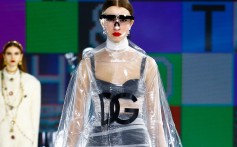Dolce & Gabbana has no intention of changing its stand-alone status, according to chief executive Alfonso Dolce. “We decided to stay independent to stay authentic and creative,” Dolce said in an interview. It is crucial for the firm to “plan our own strategy, from shop openings to runway shows to the way we relate to long-time workers and clients”, he said.
Sales are expected to climb back to pre-pandemic levels this financial year, buoyed by North and South America, after dropping 15 per cent to about €1 billion (US$1.16 billion) in the 12 months through March, Dolce said. The company has yet to fully recover from the self-inflicted public relations debacle in China,
Sales in China have rebounded 20 per cent from last year, but remain lower than before the misstep. In the social media firestorm that followed the incident, the brand managed to hang on to existing customers in China, but struggled to win new ones, according to Dolce, brother to designer Domenico Dolce
“Speaking in absolute terms, we haven’t fully overcome the incident,” the chief executive said. “But we have recovered in terms of institutional relations, even if we still suffer some animosity among some groups on the country’s social networks.”
To rebuild its image, the Italian luxury fashion house has been working with two international crisis management companies, and twice took part in China’s International Import Expo in Shanghai to show its commitment to the country. The Italian firm has about 1,200 workers in China and plans to open a new boutique in Shanghai’s Citic Square soon, according to Dolce.
 Dolce & Gabbana intends to keep investing in physical shops, particularly in Australia, South Africa and South Korea. The company is also approaching key travel hubs, with new stores opening in airports in Europe in coming months. It is looking for growth from jewellery, luxury watches, beauty care and, for the first time, home decor.
Dolce & Gabbana intends to keep investing in physical shops, particularly in Australia, South Africa and South Korea. The company is also approaching key travel hubs, with new stores opening in airports in Europe in coming months. It is looking for growth from jewellery, luxury watches, beauty care and, for the first time, home decor.
Dolce & Gabbana Casa 2021 (home collection)
More from ANALYSIS
As China shows signs of recovery, luxury brands step up engagement with the wealthy
As Chinese shoppers dip toes back in the luxury pool, brands are targeting economically resilient high-earners with distinctive, personalised experiences …
China should not be overlooked in the recovery of the global luxury industry
Over the past 30 years, the luxury industry has experienced organic growth of 6-8%, but this pace is unlikely to …
The second-hand fashion and luxury goods market to reach $360 billion by 2030
With annual growth averaging 10%, the second-hand fashion and luxury goods market is expanding three times faster than the market …











